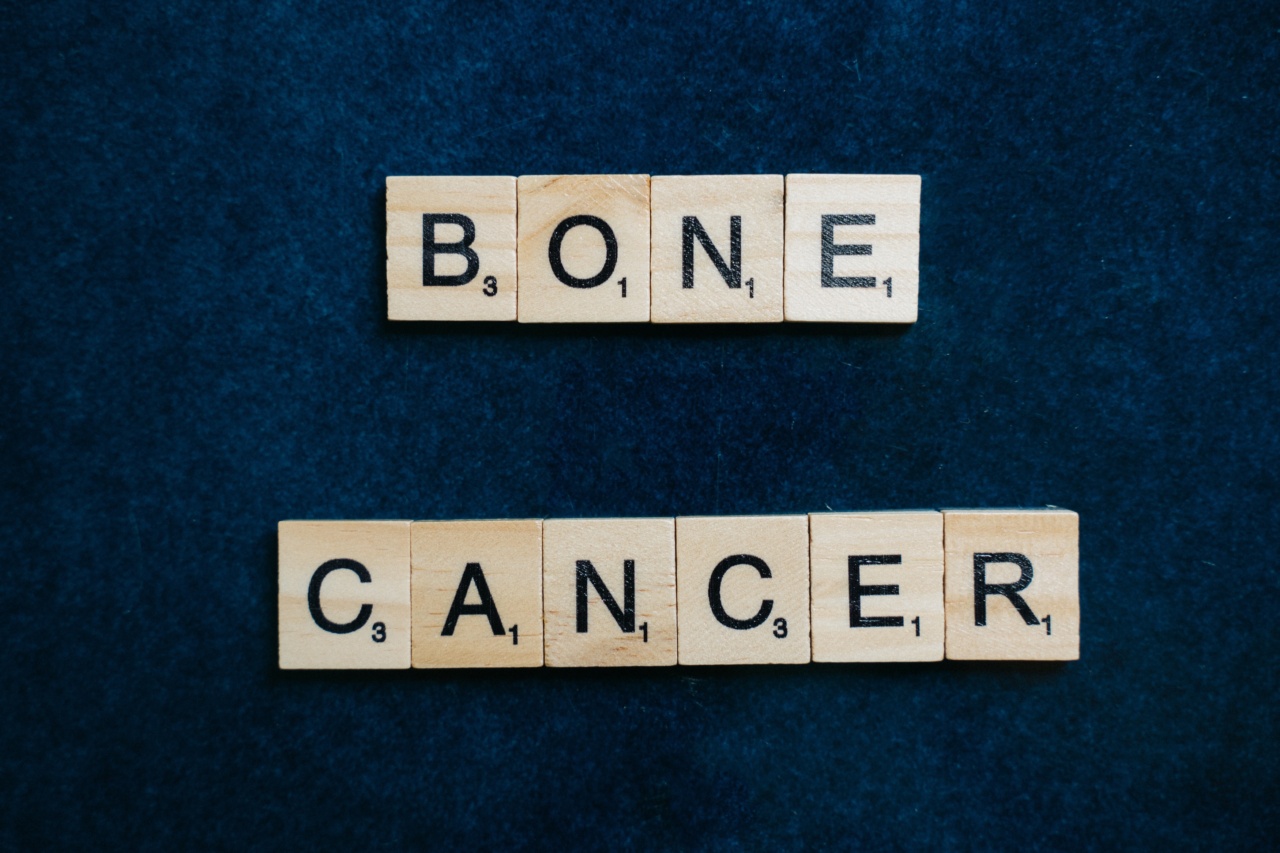Bone cancer is a type of cancer that forms in or on the bones. It is a rare condition that affects both children and adults, and it can occur in any bone in the body.
Bone cancer can be categorized into several types, each with its own characteristics and manifestations. Understanding these types and their manifestations is crucial for early diagnosis, appropriate treatment, and improved outcomes for patients.
Osteosarcoma
Osteosarcoma is the most common type of bone cancer, accounting for about 35% of cases. It usually occurs in children and young adults between the ages of 10 and 30.
Osteosarcoma typically starts in the bones around the knee, but it can also develop in other bones, such as the upper arm or shin. Common manifestations of osteosarcoma include bone pain, swelling, and limited range of motion.
Ewing Sarcoma
Ewing sarcoma is a rare type of bone cancer that primarily affects children and young adults. It most commonly arises in the long bones of the arms and legs, as well as the pelvis and chest wall.
Manifestations of Ewing sarcoma include localized pain and swelling, along with fever, fatigue, and weight loss. In some cases, the cancer may spread to other parts of the body, such as the lungs or bones.
Chondrosarcoma
Chondrosarcoma is a type of bone cancer that develops in cartilage cells. It is most often seen in adults over the age of 40. Chondrosarcoma commonly occurs in the bones of the pelvis, thigh, and shoulder.
The manifestations of chondrosarcoma depend on the location and size of the tumor, but they may include pain, swelling, and difficulty in moving the affected joint.
Osteoblastoma
Osteoblastoma is a rare type of benign bone tumor that can become cancerous in some cases. It usually affects young adults and adolescents. Osteoblastoma commonly develops in the spine or long bones of the extremities.
The manifestations of osteoblastoma include persistent pain that worsens at night and improves with activity, as well as swelling and limited flexibility in the affected area.
Chordoma
Chordoma is a slow-growing type of bone cancer that arises from the remnants of the notochord, which is a structure present during fetal development. It generally occurs in adults between the ages of 30 and 60.
Chordoma commonly develops in the bones of the skull base, spine, or sacrum. Manifestations of chordoma depend on the location of the tumor and may include back pain, headache, difficulty swallowing, and changes in bladder or bowel function.
Fibrosarcoma
Fibrosarcoma is a rare type of bone cancer that originates in fibrous tissue within the bone. It primarily affects adults, with an average age of diagnosis at 35 to 55 years old. Fibrosarcoma commonly occurs in the long bones of the legs or arms.
The manifestations of fibrosarcoma include pain, swelling, and a mass or lump in the affected bone.
Osteochondroma
Osteochondroma is a benign bone tumor that can, in rare cases, transform into a malignant osteosarcoma. It usually affects children and adolescents, but it may persist into adulthood.
Osteochondroma commonly occurs near the growth plates of long bones, such as the thigh or upper arm. Manifestations of osteochondroma may include a visible lump, limited range of motion, and pain if the tumor presses against nearby nerves or tissues.
Aneurysmal Bone Cyst
An aneurysmal bone cyst is a non-cancerous bone tumor that mostly affects children and young adults. It commonly occurs in the long bones and the bones of the spine.
Manifestations of aneurysmal bone cyst may include pain, swelling, and tenderness in the affected area. In some cases, the tumor may cause fractures or restrict normal bone growth.
Multiple Myeloma
Multiple myeloma, also known as myeloma, is a type of cancer that affects plasma cells in the bone marrow. While it is not strictly a bone cancer, it commonly causes bone lesions and can weaken the bones. Multiple myeloma primarily affects older adults.
Manifestations of multiple myeloma may include bone pain, fractures, anemia, and recurrent infections.
Metastatic Bone Cancer
Metastatic bone cancer, or secondary bone cancer, occurs when cancer cells from another part of the body spread to the bones. It is more common than primary bone cancer.
Many different types of cancer can metastasize to the bones, including breast, lung, and prostate cancer. Manifestations of metastatic bone cancer include bone pain, fractures, and bone marrow dysfunction, leading to anemia or low platelet count.
Conclusion
Bone cancer encompasses several types with distinct characteristics and manifestations. Early detection and diagnosis are crucial for determining the appropriate treatment approach and improving patient outcomes.
If a person experiences persistent bone pain, swelling, or other concerning symptoms, it is important to seek medical evaluation to determine the cause and receive appropriate care.




















